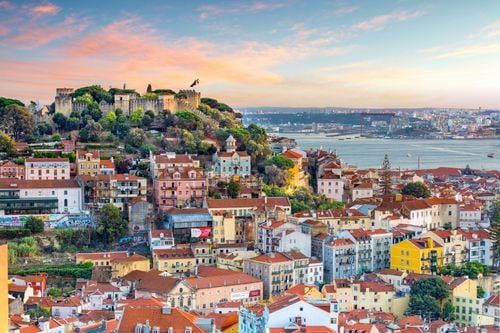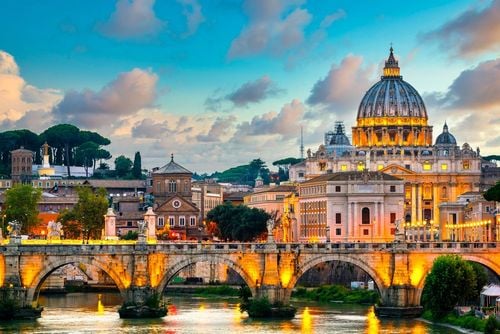Florence, the jewel of Tuscany
 Florence
Florence
Florence
- © Atomdruid / 123RF
Florence, the jewel of Tuscany
Florence, a city of around 400,000 inhabitants, lies on the banks of the River Arno in the heart of Tuscany. The jewel of the Italian Renaissance, Florence promises a resolutely cultural stay: its fascinating history has bequeathed us treasures of art and architecture, earning it Unesco World Heritage status.
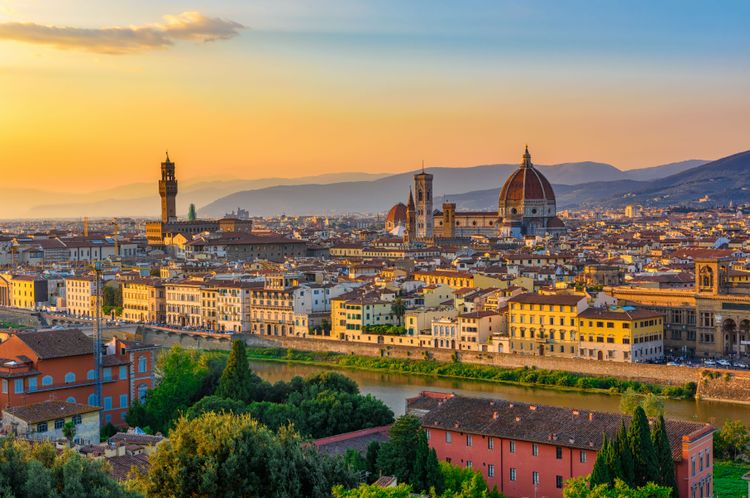
Sunset over Florence and its famous Duomo
- © Catarina Belova / ShutterstockFlorence experienced its golden age between the 11th and 15th centuries, notably under the rule of the powerful Medici family. In Italy, the artistic and literary effervescence of this period, spearheaded by Florence, marked the beginning of a flourishing historical period: the Renaissance.
It is said that the Italian language was born in Florence, with the works of Dante, Petrarca and Boccaccio, the three crowns that for centuries were considered the perfect example of Italian literature.
During the same period, Cimabue and Giotto set the tone for what was to become Italy's most important pictorial revolution in the centuries that followed. It was also in Florence that Brunelleschi, Donatello and Masaccio established themselves as the leaders of the Italian Renaissance.
The artistic emulation of Florence attracted artists such as Lorenzo Ghiberti, Filippo Lippi, Botticelli and Fra Angelico: supported by wealthy patrons, including the Medici themselves, masterpieces proliferated, completed by two of the greatest geniuses of all time, Leonardo da Vinci and Michelangelo.

Michelangelo's David at the Galerie de l'Académie
- © Marta Pons Moreta / ShutterstockToday, the works of all these great artists are carefully preserved in the city's museums: the Uffizi Gallery, one of the most prestigious art galleries in the world, the Bargello National Museum, the San Marco Museum and the Accademia Gallery... Florence is like an open-air art history book!
But painting is not Florence's only attraction: sumptuous churches such as the Duomo and the church of Santa Maria Novella, prestigious palaces such as the Palazzo Vecchio and the Palazzo Pitti, monumental squares such as the Piazza della Signoria, Piazza San Marco and Piazza della Republica... at every turn, Florentine architecture inherited from the Renaissance takes on a spectacular appearance, a complete exposé of the notion of beauty.
As you can see, Florence is sure to delight lovers of art and culture: the programme promises to be packed with visits! But let's not reduce Florence to a mere museum town. With its narrow streets full of life, its large cafés with their lively terraces, its markets, its local gastronomy and its famous wines, this is also a local experience: share for a moment in the authentic life of the Florentines.
Perfectly connected by frequent flights from France, and only a 2-hour flight from Paris, Florence is the perfect destination for soaking up culture while sampling the charms of Tuscany: for an exciting weekend or a great stopover during a trip to Italy, discover an approved classic since the Renaissance!
 Florence
Florence
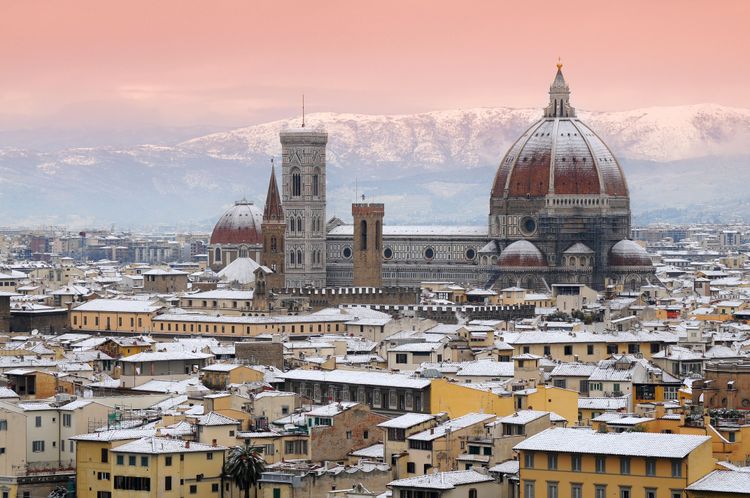
Florence en plein hiver
- © Mau47 / Shutterstock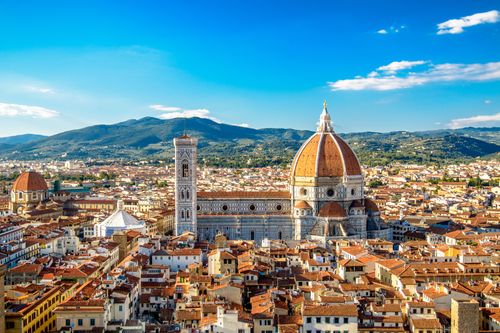

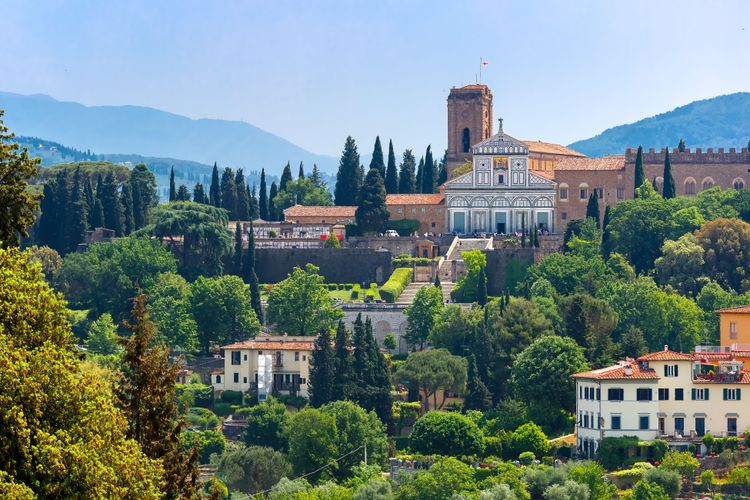 1
1
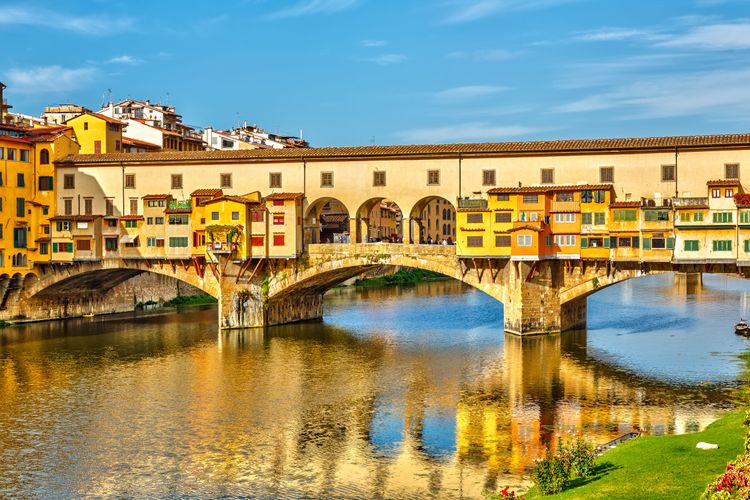 2
2
 3
3
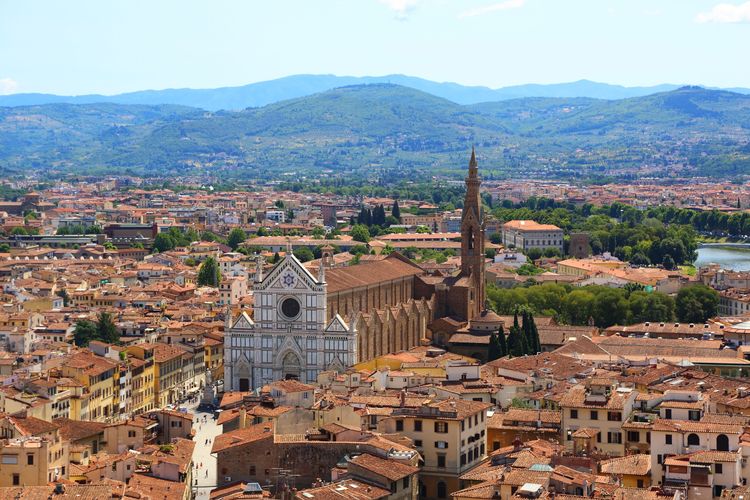 4
4
✈️ By plane, the most direct flights land at Florence airport, just 4km from the city. There are frequent flights to Paris (2-hour flight) and seasonal flights to other destinations in France.
Another flight plan: Pisa airport, one of Italy's largest, is just 1h15 by train from Florence. A good alternative for low-cost flights.
Florence is not an excessively sprawling city: if you choose a hotel in the historic centre, most of your visit will be on foot, not to mention the exceptional surroundings. As a very popular tourist destination, you'll be spoilt for choice between hotels, bed & breakfasts and flat rentals...
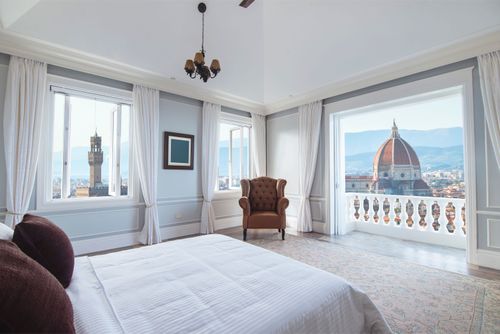
There are two factors to consider: the climate and the tourist season. The two go hand in hand!
With its typically Mediterranean climate (with more humid influences due to the neighbouring Apennines), the most pleasant seasons to visit Florence are spring (April-June) and autumn (September-October). But these two periods also coincide with the peak tourist season, when prices go up!
That's why you can just as easily visit Florence between November and March: the weather isn't as good, but accommodation isn't as expensive and museums aren't as full! The same applies at the height of summer, in July and August, when the excessive heat drives Florentines and tourists to the coast.
None, apart from remembering to take your identity document with you: the pleasure of travelling in the EU!
⏳ Plan to be in Florence for at least 2 days, so that you can concentrate on the must-sees. 3 to 5 days is even better to immerse yourself in the atmosphere. With a week or more, you'll also have time to explore Florence's surroundings, such as the Chianti region or the pretty town of Pisa.
Florence is a destination for lovers of art, museums, architecture, beautiful Italian cities... but also of the southern lifestyle and Tuscan cuisine.
🍝 There's no shortage of adjectives to describe and promote Tuscan cuisine. It represents an important page in Italian culinary art, with its pasta, pulses, fish and, above all, the famous "Florentine-style rib of beef". The dishes based on wild boar meat are just as famous. The patisserie offers Cantuccini and Panforte. Finally, we recommend sampling the local wines, such as Chianti, Brunello di Montalcino and Moscato d'Alba.
Instead of eating in the most touristy restaurants, we suggest you walk a little and get away from the main places of interest: you can enjoy dinners in some very good restaurants.
🚍 Wear good shoes and plan to get around on foot as much as possible: that's how you become part of real Florentine life. If you need to, take the two tram lines (line 2 links the airport in particular), which are very practical, or the small AT buses that criss-cross the city (harder to find your way around!). Generally speaking, don't take the car in Florence. You need to have studied at the Polytechnic and paid a string of fines before you understand the parking system.
Be very careful when taking taxis in general, and from the airport to the centre of Florence in particular: you could be asked to pay astronomical sums.
💡 You need to plan your trip to Florence well in advance! For all the city's major museums and monuments, we strongly advise you to book your tickets and time slots in advance, online. The same applies if you want to take a guided tour; some museums offer combined tickets valid for several days. Depending on your programme, it may also be worth buying the Firenze Card.
🎁 Buying a wallet and leather gloves at the Florence market is a real must. On the other hand, gourmets can choose cheeses and bottles of local wine: they're excellent!
A walk along the Ponte Vecchio should end with a coin toss: tradition says it brings good luck.
Florence Tourist Office
France Diplomatie
explore Try out our comparators
It is Easy to travel

